Tillandsia belloensis
Click thumbnails for full size, scaled to a new window.
Tillandsia belloensis
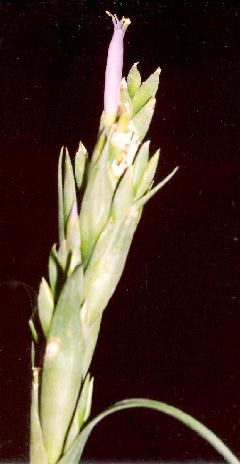
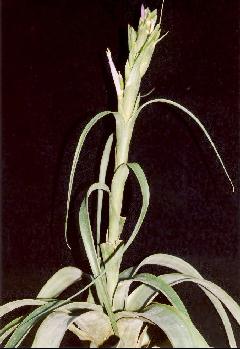
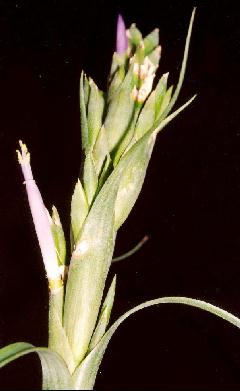
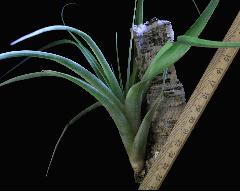
| Ken Woods 08/04. |
Ian Hook 08/08. |
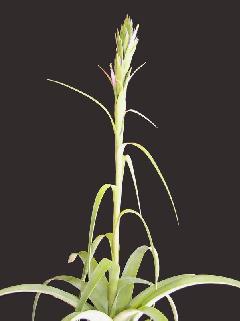
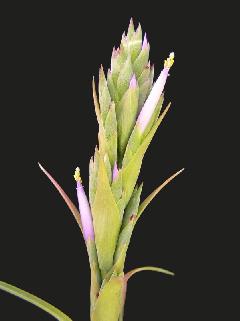
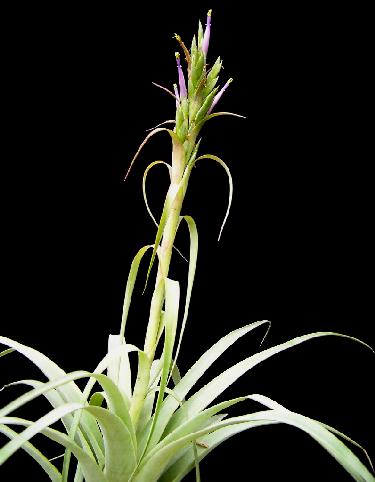
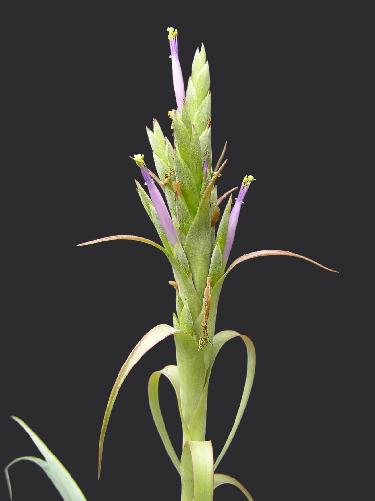
| Ken Woods 12/05. formerly labelled polystachia this website* |
Ken Woods 01/11. |
* - apparently a fairly common mistake in Australia, even though both species are available.
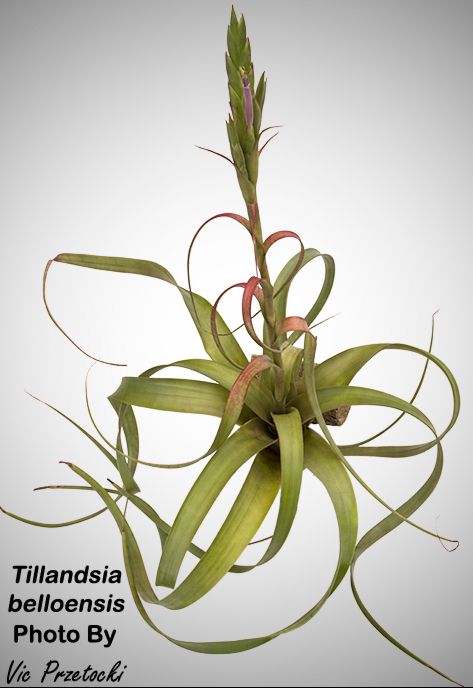
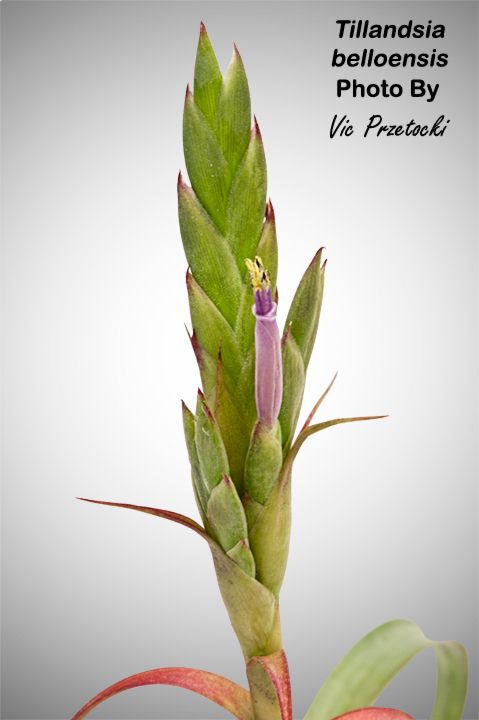
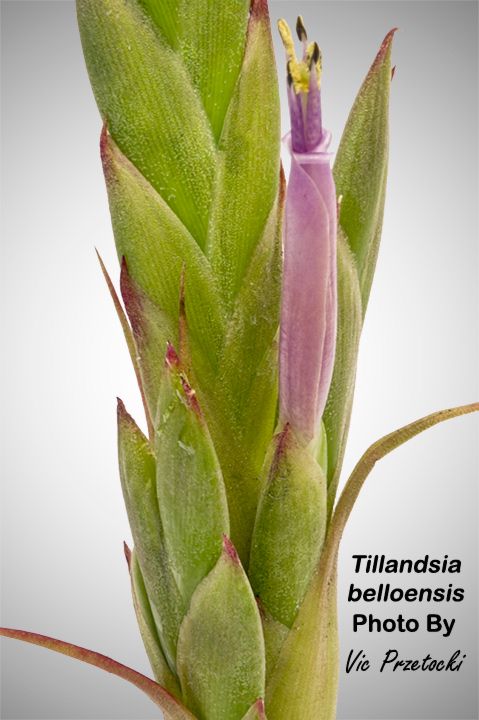
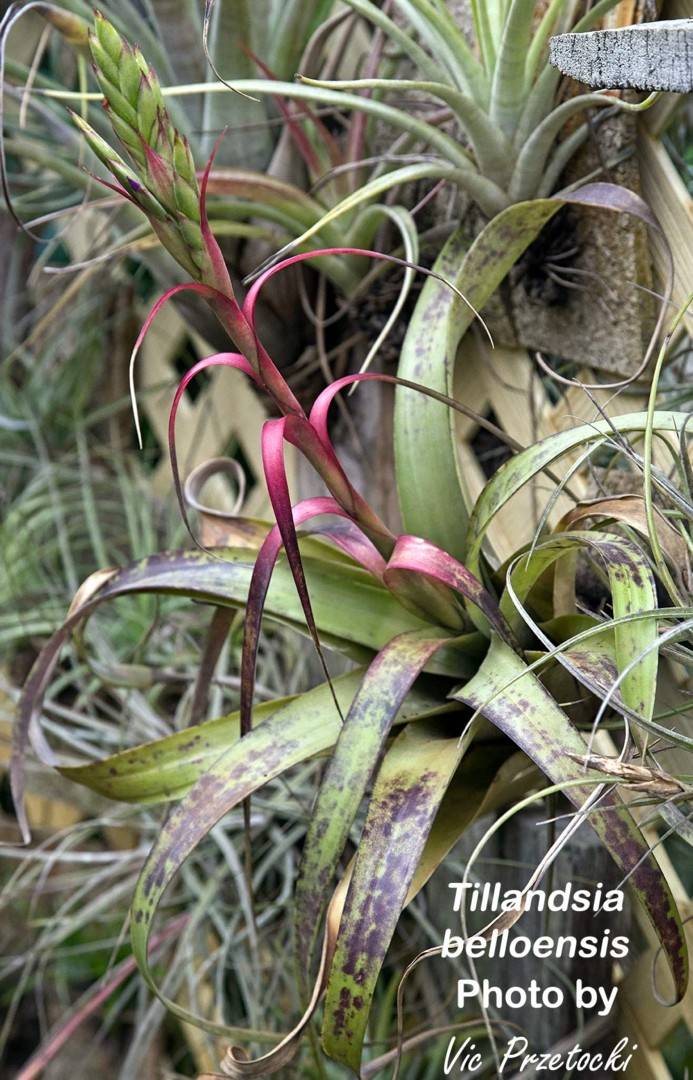
| Vic Przetocki 11/18 from 1996 seed |
Vic Przetocki 11/22 |
Vic Przetocki 11/22 ... "seed sown 18-11-1996 flowering now for the first time."

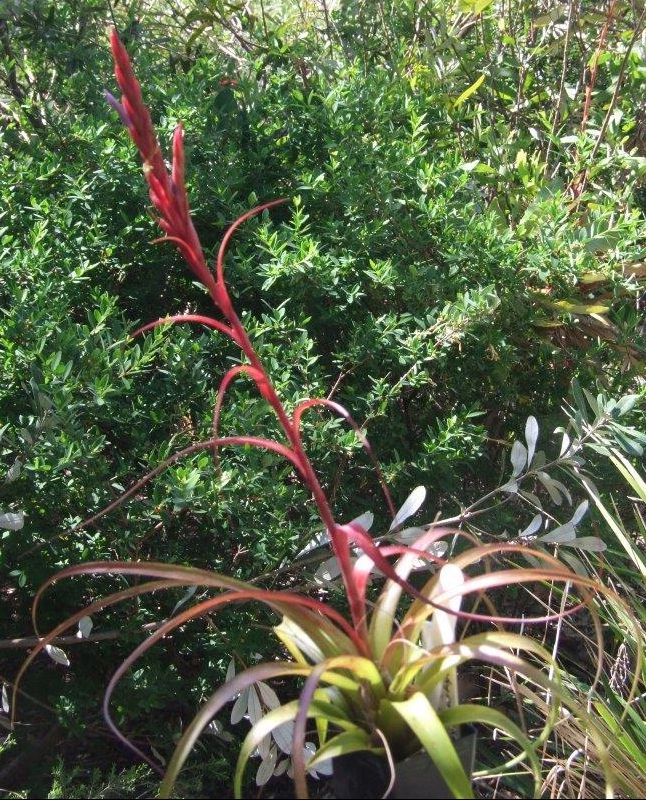
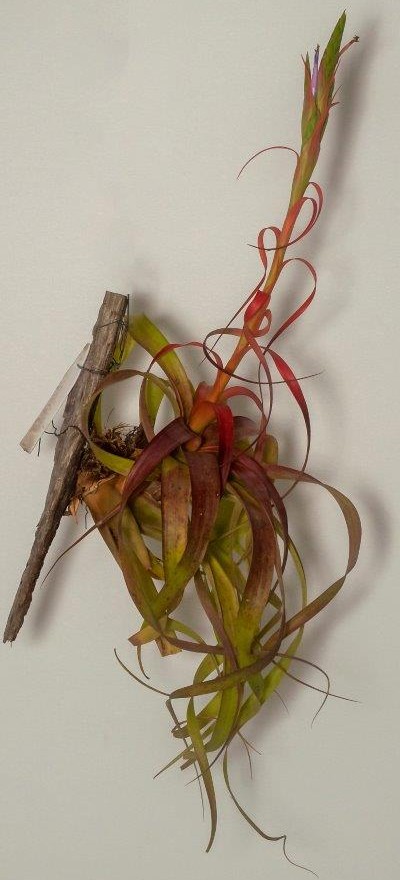
| Rob Bower 10/17 |
Rob Bower 07/20 as variabilis 'Red'* |
Rob Bower 10/10 |
Eric Gouda 07/20 ... "*Rob: I think this T. variabilis 'red' is Tillandsia belloensis W.Weber, a species close to T. polystachia. The other photos are T. variabilis all right."
Rob Bower 10/10 ... "A plain species but kind of graceful."
Derek Butcher ... "Reading attached."
Rob Bower 10/10 ... "Thanks Derek for the article. Do you think my belloensis is polystachia? The belloensis pics in BinA look like mine."
Derek Butcher ... "Your decision. All I know is that T. polystachia is very variable."
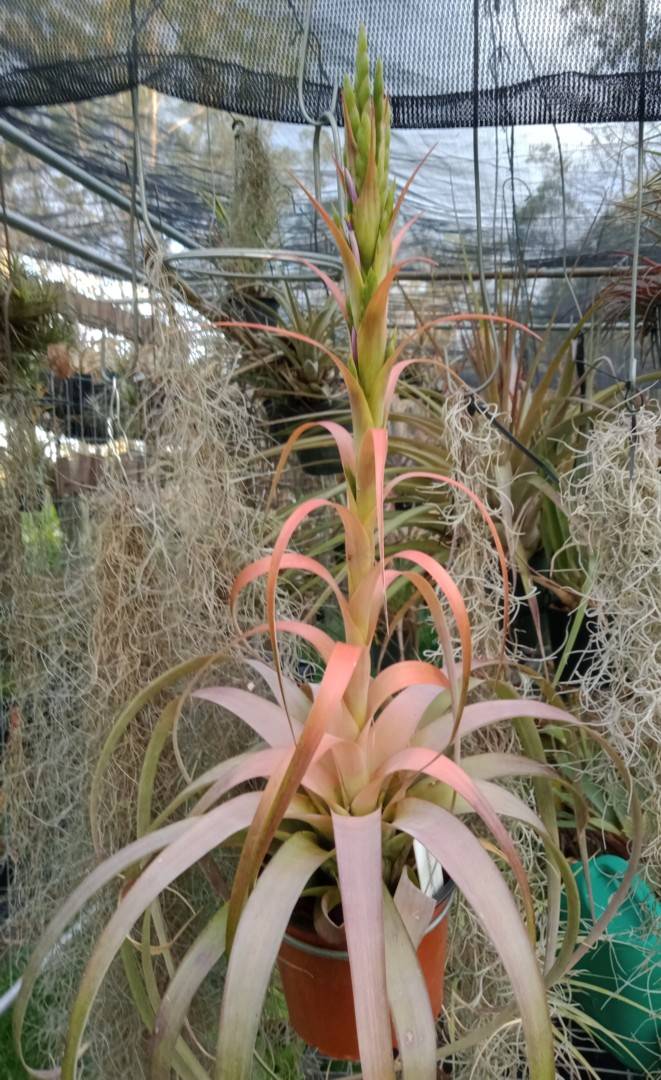
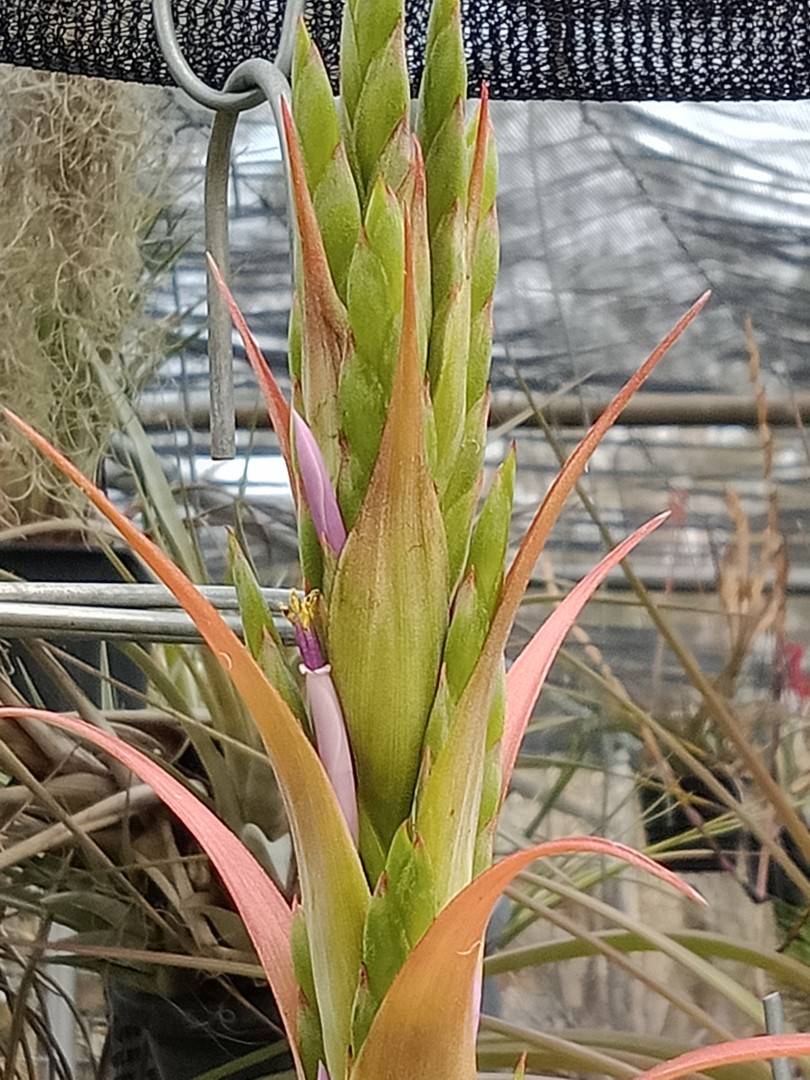
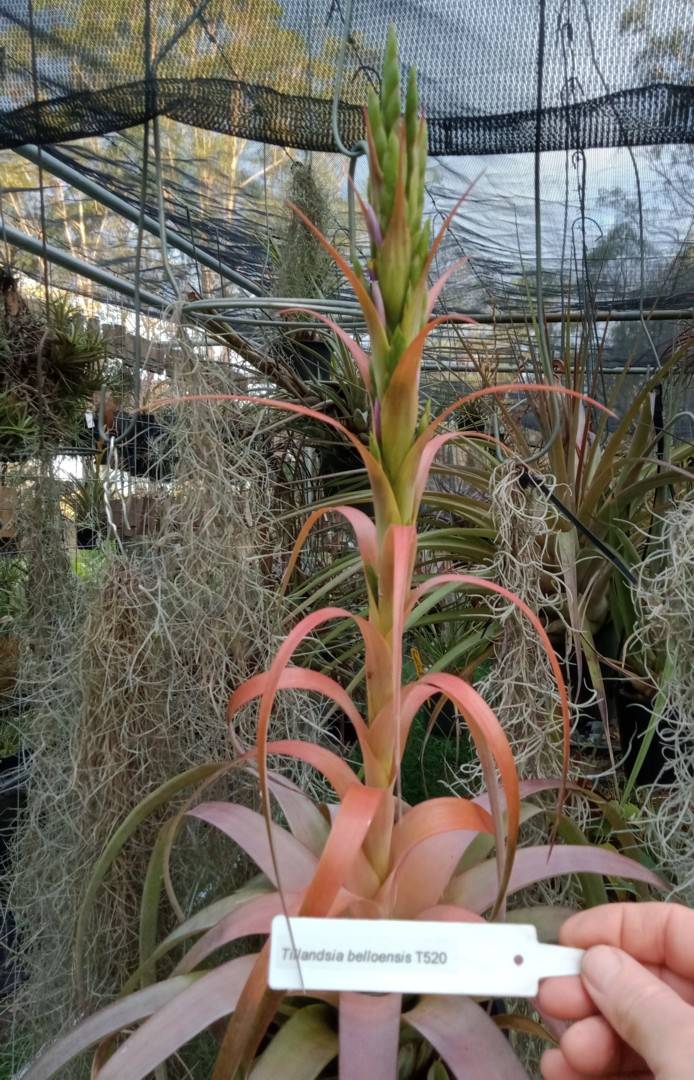
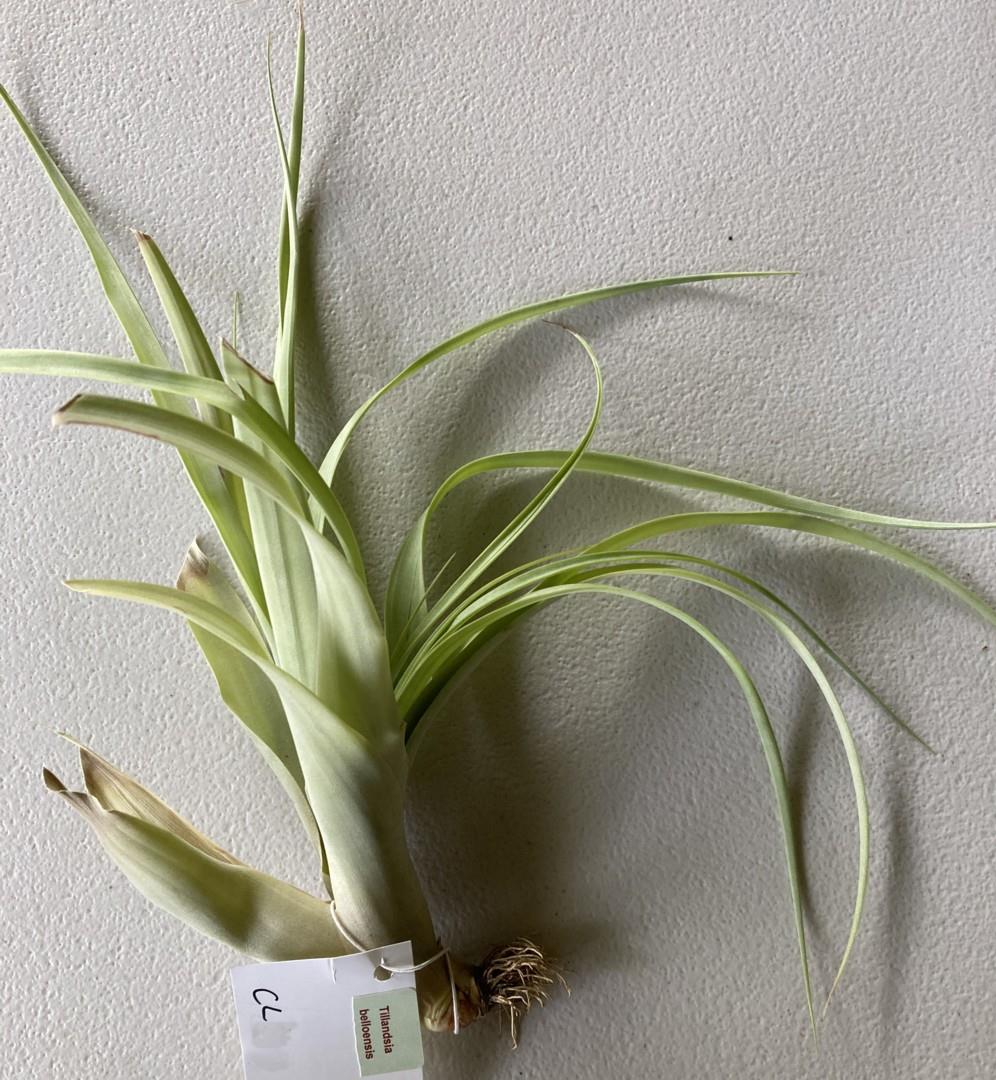
| Leslie Evans 11/22 |
Ian Hook 05/25 |
Leslie Evans ... "This is one I got last year at the Tillandsia conference. This flowered around October 2021 and I have just harvest seed. I've grown this under 50% shade cloth on the roof but nothing on the walls."
Tillandsia belloensis Weber Feddes Rep. Bd.94, Heft9-10: 602-4 1983
Translated from German by Derek Butcher.
Plant - stemless, flowering to 45cm high.
Leaves - numerous, forming an erect to bending outwards rosette, fine and dense appressed scales.
Sheath - oval, distinct, to 10cm long, 5cm wide, light rust colour.
Blade - narrow triangular, long acuminate, 20 - 27cm long, 15 - 30mm wide next to sheath, channelled.
Scape - erect, thick, 30cm long, 7mm diam., round, smooth, internodes 20 - 30mm long.
Scape bracts - enclose the scape, lanceolate-oval, much longer than the internodes, inconspicuous almost dense appressed scales, with very long, bent over leaf-like blades.
Inflorescence - densely bipinnate with 10 - 12 spikes on the side, spindle-shaped, 15cm long, 22mm diam.
Primary bracts - erect, the bottom ones as long as the spike (without the blade), with long, bent over blade similar to the scape bracts, the upper ones with gradual reducing blades and shorter than the spike, reddish, nerved.
Spike - sesile, erect, oval, lanceolate, drawn together, 40 - 45mm long, to 15mm wide, dense, distichous, ca 8 flowered.
Flower - sessile, ca 35mm long,.
Flower bracts - broad-oval, tipped, leathery, 15 - 18mm long, to 10mm wide, the tip keeled, equalling or a little longer than the sepals, green with red edges.
Sepals - tipped-lanceolate, 15mm long, posterior ones keeled and 3 - 4mm connate, leathery, shiny, not nerved.
Petals - not seen
Habitat - Mexico, Chiapas, between Monte Bello and San Cristobal, leg. R Ehlers sn. March 1982 Holo WEB 486
Comments on Tillandsia belloensis by Renate Ehlers in J. Brom. Soc. 43: 74. 1993
In the Distributional Check-List of the Genus Tillandsia by Lloyd F. Kiff there are two comments concerning T. belloensis Weber: Harry Luther states that it might be synonymous with T. polystachia (Linnaeus) Linnaeus; Walter Till observed that it might be a natural hybrid of T. polystachia and some other species.
We collected the type specimen on the road to the Lagunas de Montebello in Chiapas in 1982. At that time the plant was very common in that area, but the only other bromeliad growing with it was a Catopsis. In the meantime the area has been cultivated and few plants can be found. But the plant is widespread in Chiapas and Veracruz.
We have also found Tillandsia belloensis in the state of Chiapas near Ocozocoautla, near Tuxtla Gutierrez, in the Sumidero Canyon, much of it near La Prusia, and in the state of Veracruz between Cordoba and Huatusco and near Jalapa. In the area of Ocozocoautla we found T. polystachia near the type location of T. chiapensis Gardner but no T. belloensis. We are sure T. belloensis is not a natural hybrid.
Although the author, Wilhelm Weber, compared T. belloensis with T. mexicana L.B. Smith, Luther is right: the plant is closely related to T. polystachia. It differs by the narrow-cylindric inflorescence with erect spikes adpressed to the main axis; the primary bracts are not much shorter than the axillary spikes but the sheaths of the basal ones are as long as the spikes, the blades much surpassing them; the flower spikes are one and one-half times as wide as those of T. polystachia. The plant is very consistently distinguished from T. polystachia.
My conclusion is that Tillandsia belloensis is a distinct species.
Email notes Jan 2000
From: Derek Butcher to Andrew Flower....
Thanks for your query plus photo.
If it came from New Zealand it must be a hybrid, but then I thought what about T. belloensis which is not in my key because it is rare (ie not in Oz).
Refer BSIJ 1993 p74 where Renate got stuck into Harry. I am enclosing a photo by Renate and a longhand description of this plant.
I assume you did not want the German version. If you believe my guess is correct I will add it to my checklist.
From: Andrew Flower to Derek Butcher
I wouldn't bet on its not being in Oz... see below.
Thanks. I worked through the description, and AF100 was remarkably consistent. Met every criterion I could check (36 of them). Slight differences insofar as on AF100 only the bottom primary bract had a sheath as long as the spike (ie., not the "bottom ones" as in your translation) and also the primary bracts are not bent back as far as the scape bracts. However, looking again at the photos, I'd say you are right about it being T. belloensis.
I think there is something going on.... looking at Isley's photo of T. polystachia, the plant has (softish?) yellow leaves in quite a flat rosette. AF100, and other photos of T. belloensis show quite a hard looking, more upright rosette of purplish leaves. NOW... I have half a dozen batches of seedlings labelled "T. polystachia", and one batch of seedlings from AF100. The AF100 (belloensis) seedlings are deep purple and have an upright rosette. Some of the "polystachia" seedlings batches have quite a bright yellow leaf, already spreading, and others are deep purple and upright like T. belloensis {I don't mean variation within the batches - the whole batch is either yellow/recurving or purple/upright} ..., suggest anything to you? I'll go and check through all the seedling batches, but I'm pretty sure at least one of the purple "polystachia" batches came from the BSA seed bank. I'll get back when I've had time to document them and photograph them. Cheers, Bertie.
T. belloensis v. angustispica NOT YET PUBLISHED
spec. San Gabriel EM 932001
Plant - stemless, flowering ca. 30 -50 cm high, forming a 30cm high, 35 - 50 cm wide open rosette.
Leaves - numerous, 20 - 45 cm long, coriaceous, yellow-green, both sides with dense very fine appressed scales, appearing green.
Sheath - distinct, 6 - 12 cm long, to 4 cm wide, elliptic.
Blade - 2 - 3cm wide next to sheath, to 40cm long, narrow-triangular, much spreading, both sides with fine appressed grey scales.
Scape - erect, 5 - 10 cm long, shorter than the leaf rosette, 6 - 8mm thick, green, glabrous, covered by few imbricate foliaceous scape bracts.
Inflorescence - erect, ca. 12 - 30 cm long, 2 - 3,5 cm wide (except the spreading primary bracts), narrow-cylindric, very laxly bipinnate with 5 - 15 polystichous, almost erect spikes. internodes of the lower branches about as long as the spike.
Axis geniculate, 4 - 5 mm diam., sulcate, green, glabrous, somewhat visible.
Primary Bract - similar to the upper scape bracts, sheaths of the basic branches nearly as long as the spike, joined to the broad side of the spike, the apical ones much shorter,
blades to 30 cm long, very narrowly triangular and tapering in a filiform tip, much spreading, yellow-green.
Spike - 4 - 7cm long, 6 - 8 mm wide, lanceolate, with 2 - 4 mm long stipe, complanate, joined the flat side towards the inflorescence axis, nearly erect (spreading about 20 °) with 5 - 13 distichous, (internodes 5 - 7 mm) imbricate, sessile,
flowers scentless mostly with 2 sterile bracts, somewhat flexuous, green, glabrous,
rhachis at the time of anthesis not visible.
Floral Bract - 1 - 1,5 cm long, 5 - 8,5 mm wide, exceeding the sepals, oval, acuminate, thin-leathery, carinate, yellow with nearly black tips and edges, both sides glabrous.
Sepal - 9 - 11 mm long, 3- 3,5 mm wide, elliptic acute, yellow glabrous, thin-leathery, the posterior pair keeled and short connate.
Petal - pale blue.
Stamens -
Type - Mexico, Oaxaca, San Gabriel 600 m s. m. (between Puerto Escondito and Sola de Vega, 1993 leg. Klaus and Renate Ehlers, EM 932001
The plant seems to be related to T. belloensis but differs by the following characters:
Leaves longer and the blades narrower.
Scape shorter, nearly lacking.
Inflorescence much longer, not densely but very laxly bipinnate, internodes of the spikes many times longer,
Primary bracts with much longer very narrow blades, also the apical ones with long blades, yellow not red, spikes longer but much narrower, (only half as wide),
Floral bracts smaller, green with black margins, appearing green, not green with red margins appearing red,
Sepals shorter.
Result:
Not enough difference to be a spec. But maybe a var.????
Harry Luther comment Feb 2001
Thanks for T. belloensis xeroxs. As to EM932001, it looks like an odd individual. Does it represent a population? I’ve seen lots of these kind of random oddities with lots of Tillandsias; never thought much about it.
Unless it represents a real population I would not pay much attention to it.
HEL
Updated 21/05/25


















